Such different T-62 tanks: what are ours now fighting in a special operation
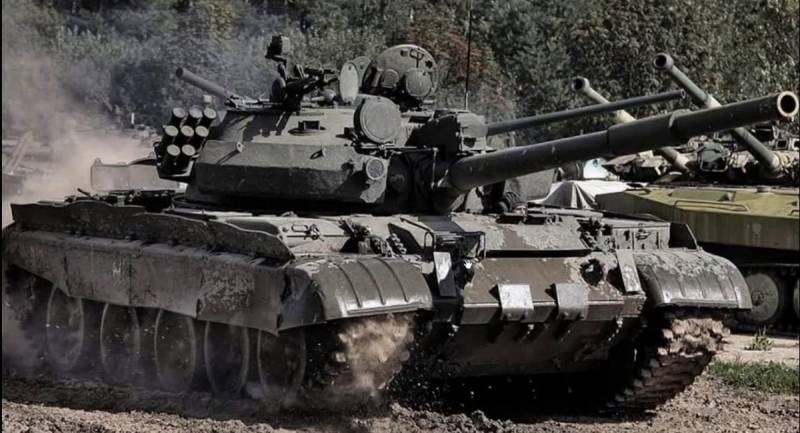
After February 24, 2022, all topics somehow related to the “sixty-twos” acquired a special, one might say, explosive property. Last year these Tanks began to be removed from storage bases and transferred to active formations on the fronts of a special military operation, which caused a flurry of absolutely polar comments, both among the general public and among military experts.
A storm of emotions followed the announcement of the modernization of hundreds of T-62s at the 103rd BTRZ in Atamanovka, Zabaikalsky Krai. However, it does not subside even today, when these modified machines appeared in the NWO zone. In short, not a tank, but a real trigger that can stir up even the deadest swamp.
Today we will also try to step on this thin ice, but not with the aim of igniting another controversy. It’s just that the T-62s, on which ours are fighting today, are quite a few, both in quantitative terms and in terms of modifications, we’ll talk about them - at least the main ones.
T-62 old model
It somehow happened that when mentioning the T-62 tanks used in the special operation, for some reason, its late Soviet modification under the T-62M index, which today is considered one of the “freshest”, comes to mind by itself. However, this is not the case - most likely, some (very small) number of earlier “sixty-twos” of the sixties and seventies went to the front in the summer of 2022.
These tanks do not need a special introduction: from 1962 to 1975 - with some changes from series to series - almost 20 units were produced. And, despite sending a decent number of cars abroad, they were rightfully considered one of the most massive in the USSR.
For their time, the T-62 looked very good: weight 37 tons with a 580-horsepower diesel engine, a powerful 115-mm smoothbore gun with the ability to fire sub-caliber, cumulative and high-explosive fragmentation shells; steel armor with a thickness of up to 100 mm in the frontal part of the hull and up to 211 mm (in later series, the thicknesses were slightly increased) along the forehead of the tower, and from the sights - an optical one for firing in daylight conditions and a device on an electron-optical converter with active infrared illumination searchlight for night.
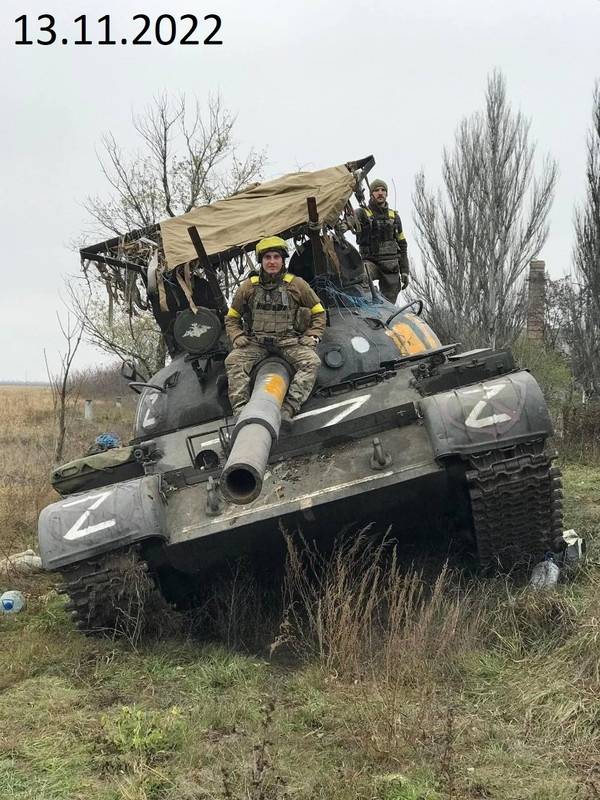
One of the old T-62s that fell into the hands of the Armed Forces of Ukraine
Nevertheless, by the end of the seventies, the tank began to rapidly become obsolete, since neither the armor nor the sighting system met the modern requirements at that time. The same applied to firepower, although the capabilities of the 115 mm gun were not yet exhausted to the limit.
However, tanks, if we are talking about the domestic Armed Forces, managed to be noted both in Afghanistan and in the Chechen campaign, and the war "08.08.08". And now they are also fighting in a special military operation in Ukraine. However, there are really few of them, which cannot be said about their modernized counterparts.
There are rarities
Speaking about the "sixty-two" of early samples, one cannot fail to mention one tank that appeared in the lenses of television cameras in June last year. We are talking about the T-62 tank with its own name "FartoVy", which many took for some kind of field modification by craftsmen from the republican armed forces.
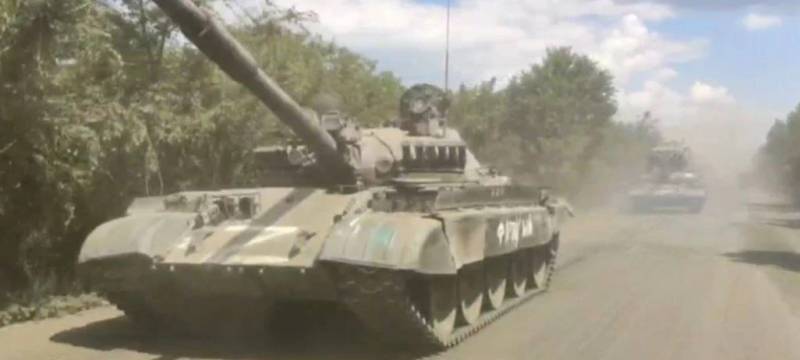
In fact, it turned out to be almost a museum vehicle "Object 169", the release of which was limited to just a few units towards the end of the seventies and, on the whole, was in the nature of approbation of some design solutions, which were then adopted during the modernization of the T-62 tanks to the "M" standard .
The main differences between the "Object 169" and existing tanks were: launchers for smoke grenades "Tucha" with an arrangement of the T-72A type on the frontal parts of the tower, anti-cumulative side screens and a thermal insulation casing of the gun barrel. There was also a laser rangefinder mounted above the gun, but of course, there was no Volna fire control system that became the hallmark of the T-62M.

One of the early Object 169 tanks
Later, some of the vehicles, having fallen under the total wave of modernization along with other "sixty-twos", were nevertheless equipped with the "Wave" and the Sheksna guided weapon system. And, as it became clear, at least one of them fell into the special operation zone and lit up near Severodonetsk in June 2022.
To be honest, this particular tank has a place in the museum, since it represents some historical value. But in the troops this concept is treated differently: once it is on the list of combat units, then go ahead. The situation is the same as with the T-80UM-2 - a tank with a deactivated Drozd active defense system, which ended up in the ranks of the Kantemirovskaya division advancing on Ukraine.
T-62M and T-62MV
Tanks T-62M and T-62MV are already real veterans of the special military operation in Ukraine, which are used in large numbers in battles. In general, it is these vehicles that still form the basis of the “sixty-two” fleet, on which ours are fighting against the Armed Forces of Ukraine.
The history of the appearance of the T-62M begins in 1981, when in the USSR, at the government level, a decision was made to modernize the accumulated in huge numbers, but shamelessly outdated T-62, bringing the combat characteristics to the level of the T-64 and T-72 tanks of the early series. However, the tank was adopted already in 1983.
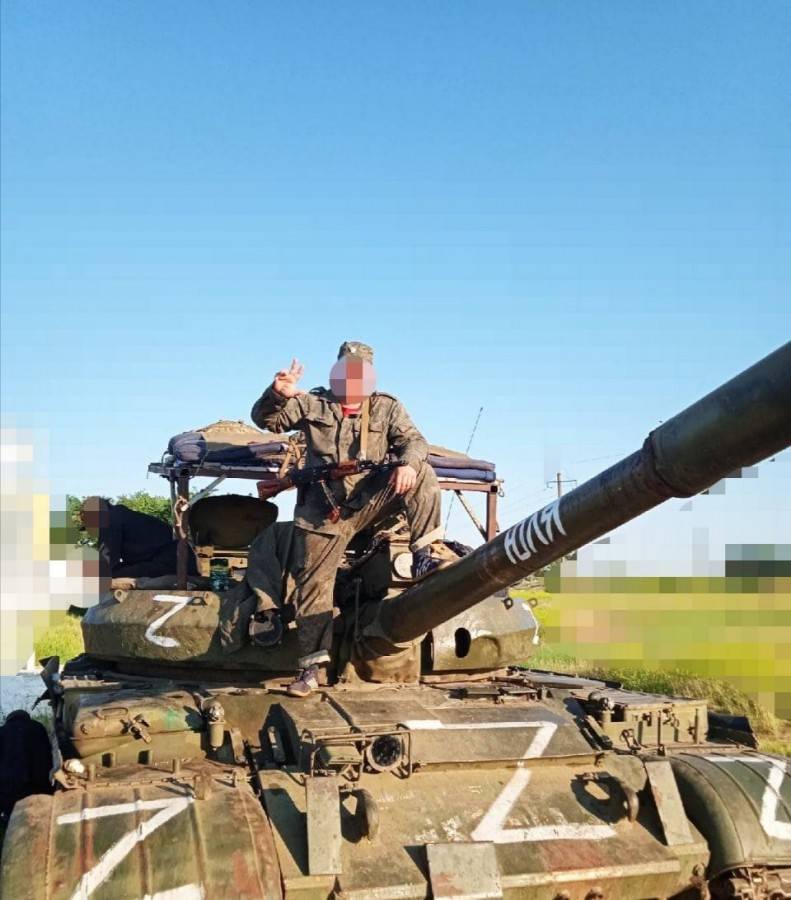
Tank T-62M in the NVO zone
According to the degree of their versatility, the events were really large-scale.
So, for example, in terms of improving firepower, the matter was limited not only to the release of new shells, including armor-piercing sub-caliber depleted uranium-based alloys, but also to the introduction of a fire control system (FCS) and providing the ability to fire guided missiles through a cannon barrel.
The SLA in this case is, of course, the “Wave”. It includes a KDT-1-1 (KDT-2) laser rangefinder, a Meteor-M1 stabilizer, a BV-62 ballistic computer, a TSHSM-41U optical sight, and a set of related equipment. And, of course, this is far from the level of some 1G46 T-80U or T-90 tanks, but in semi-automatic mode, corrections for the aiming angle and lateral lead give out that, when compared with the old serial T-62 tanks - heaven and earth.
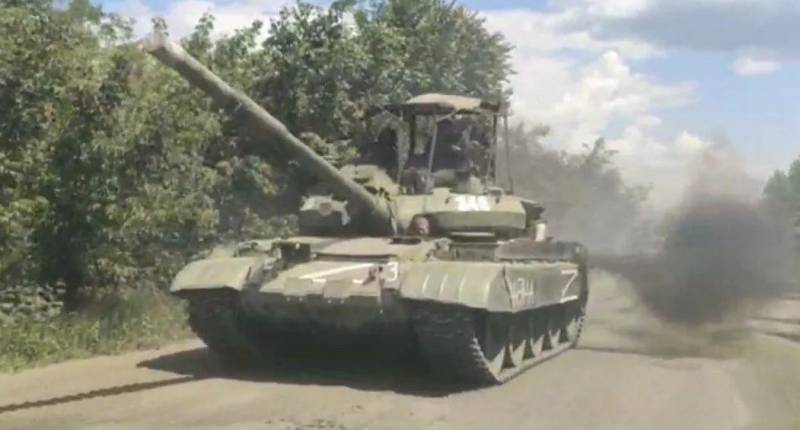
Tank T-62M in the NVO zone
The 62K9-116 Sheksna complex is responsible for the guided weapons of the T-2M, which includes the 1K13 sight-guidance device, which provides both guidance of anti-tank missiles launched through the cannon barrel at a distance of up to four kilometers, and firing conventional projectiles from a cannon and coaxial her machine gun, but already at night at distances up to 1 meters using an infrared illuminator and up to 200 meters in passive mode.
The armor of tanks in the frontal projection was reinforced by metal-polymer blocks, which increased resistance against sub-caliber projectiles to 320-350 mm and against cumulative ammunition up to 420-450 mm. In addition, the vehicles were equipped with Tucha smoke grenade launchers, on-board anti-cumulative screens, the Soda anti-napalm complex and additional steel sheets on the bottom in the driver’s area to reduce the impact of anti-tank mine explosions.
Among other things, the T-62M received improvements in the undercarriage, more powerful V-55U engines with 620 horsepower, as well as new means of communication.
It is noteworthy that the "sixty-two" were upgraded at repair plants in a rather accelerated mode, so there were not always enough complete sets for their completion, so that some of the machines were deprived of one or another component.
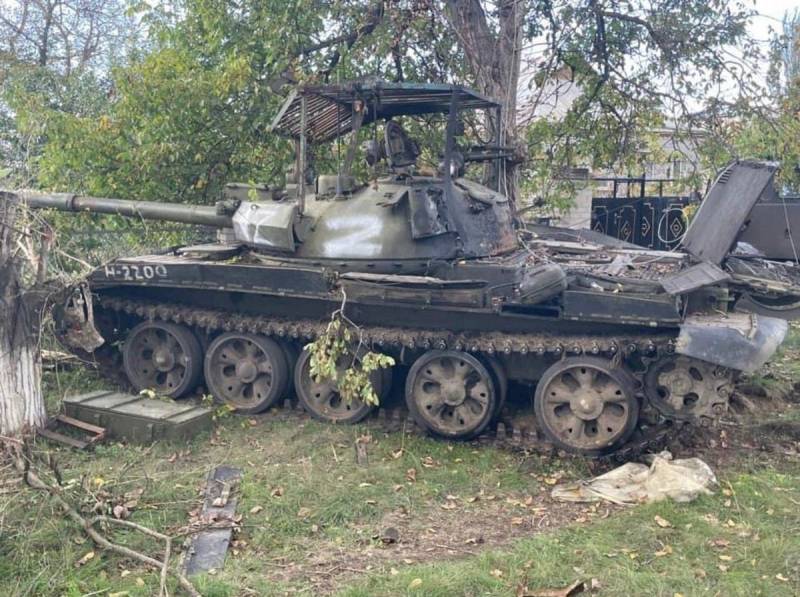
It is also worth noting that there were, let's say, "sub-variants" of the T-62M. Among them, for example, the T-62M-1 with a V-46-5M engine with a capacity of 690 horsepower or the T-62M1 without a guided weapon system. So at the storage bases and, accordingly, in the zone of the special military operation, there could be a whole zoo of tank modifications.
As for the T-62MV, put into service in 1985, their main difference from the usual "emoks" is the dynamic protection "Contact", installed both in the frontal and side projections of the tank. In terms of sights and other things, everything is identical there. And, as in the case of the T-62M, the T-62MV tanks were also made in several versions, including the V-46-5M engine, specimens without missile weapons, and so on.
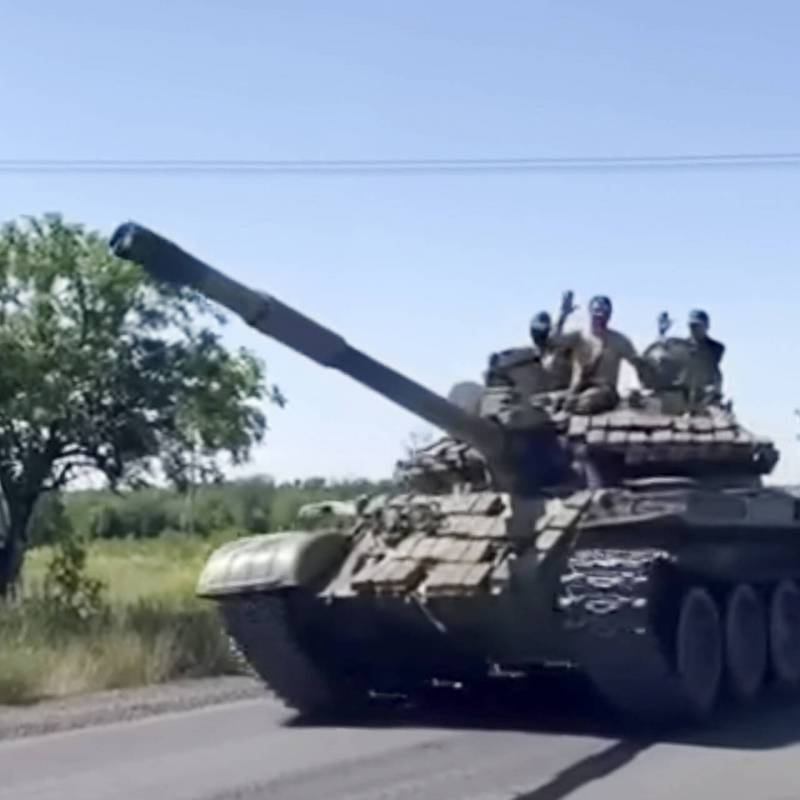
T-62MV in the zone of special military operation
Of course, the measures taken made it possible to significantly improve the combat capabilities of the T-62, so the vehicles turned out to be quite suitable for participating in modern military operations at that time in secondary directions or conflicts of low intensity. Here you can even say that they could act as, although not the best and with reservations, but still an alternative to some T-72A.
In fact, that is why they were kept in storage for decades already in modern Russia, and some of them were even regularly used. And, as you can see, they were not kept in vain.
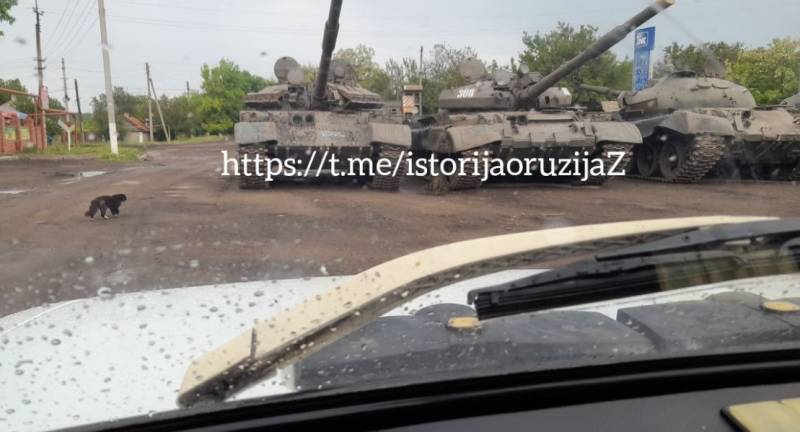
T-62MV left
But times are changing, and a special operation is far from a war with conditional Basmachi, whose arsenal of combat weapons is very limited. Accordingly, the T-62M and T-62MV with their variations, if they nevertheless decided to massively remove them from storage, require adequate improvements, without which their effectiveness, to put it mildly, is not always high.
T-62M and T-62MV model of 2022 are also different
In the fall of 2022, it was announced that the 103rd armored repair plant in Atamanovka, in the Trans-Baikal Territory, was starting a large-scale modernization of the T-62M and T-62MV tanks being removed from storage. On news Everyone reacted differently, but we have what we have.
At least one battalion of Ataman modernization tanks of the 2022 model has already been sent to the zone of a special military operation, and the second is on the way.
There was really a lot of talk about what exactly will be added to the tanks and how they will be modernized. However, there is still no specifics: they simply managed to overhaul or equipped the cars with new means of communication, more powerful engines and other things - it is not clear.
However, there is still some information.
First of all, the T-62M tanks were standardized according to the fire control complex, the basis of which is now by no means the “Volna” - laser rangefinders mounted above the guns are completely removed from the vehicles passing through the plant and armor plugs are put in their place. So it will no longer be possible to fire through an optical sight - it was left in place - with all the necessary amendments produced in a semi-automatic mode.
The 1K13 is also being removed, which served as a night sight for firing from a cannon and a machine gun coaxial with it, as well as a guidance device for tank guided missiles.
Instead, they put a thermal imaging sight-rangefinder 1PN96MT-2, which includes its own ballistic computer. And, I must say, the replacement turned out to be very profitable: unlike the 1K13, it provides a target detection range of two to three kilometers in difficult visibility conditions at night and day, and at the same time it has automation similar to the Wave.
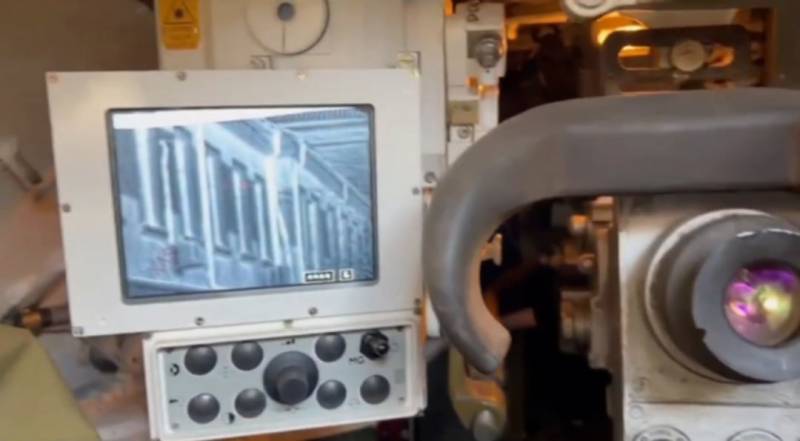
Control panel and display of the thermal imaging sight 1PN96MT-02 to the left of the optical sight
Yes, now tanks are deprived of the ability to fire guided missiles, since the 1PN96MT-2 does not have such functionality. However, their often low efficiency is more than offset by the presence of a thermal imager in the new sight. The exchange is definitely correct.
As for the security of the updated T-62M, there are at least two variations of it.
The first - without the use of any measures for the additional security of the tank. Some refer to these vehicles as a kind of installation or training (for mobilized) batch of tanks modernized in Atamanovka, since the T-62M, despite the new sight, is equipped with the same protection in the form of metal-polymer blocks as their original Soviet version.
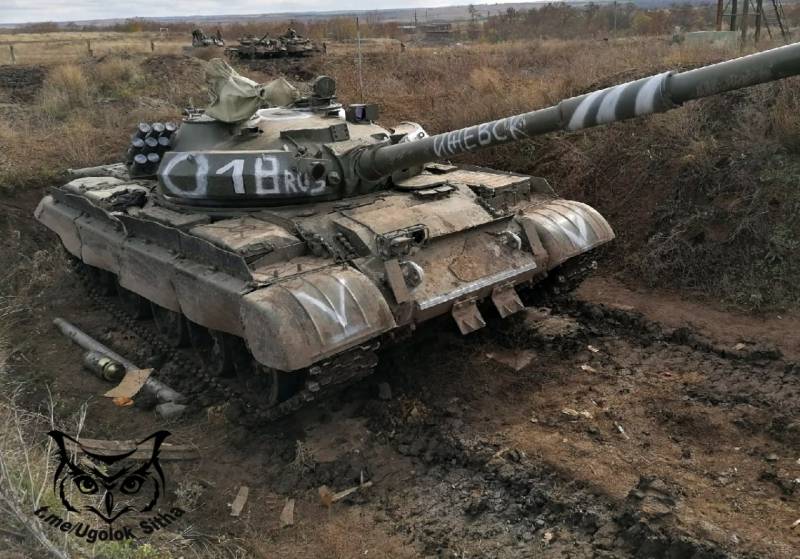
T-62M model 2022 without additional dynamic protection
How many they got to the front is the question.
The second - with lattice screens in the rear of the tower and dynamic protection "Contact", which was installed in the frontal part of the hull over the metal-polymer blocks of additional armor and on the roof of the tower. These T-62M tanks of the 2022 model can already be considered quite serial, since they have already been seen in battles in Ukraine, and their production continues at the 103rd BTRZ.
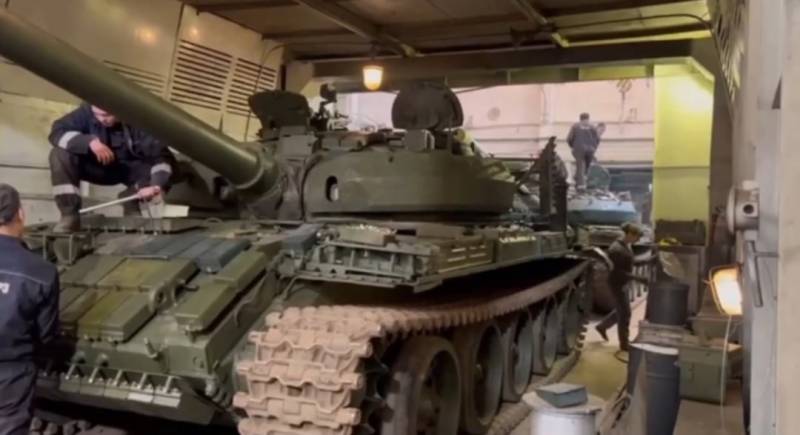
T-62M model 2022 with additional dynamic protection on the 103rd BTRZ
The idea turned out to be strange: the forehead of the hull was equipped with "reactive armor", and the forehead of the tower, as one of the projections most susceptible to shelling, received nothing in addition, except for standard protection. By the way, we already wrote about the possible reasons for such a “halving” of armor here. here.
At the same time, not only the T-62M tanks, but also the T-62M-1 with the V-46-5M engine, which we talked about above, fall under the modernization at the Atamanovsky plant. So a variety of varieties, even within the same production of military vehicles, is already present.
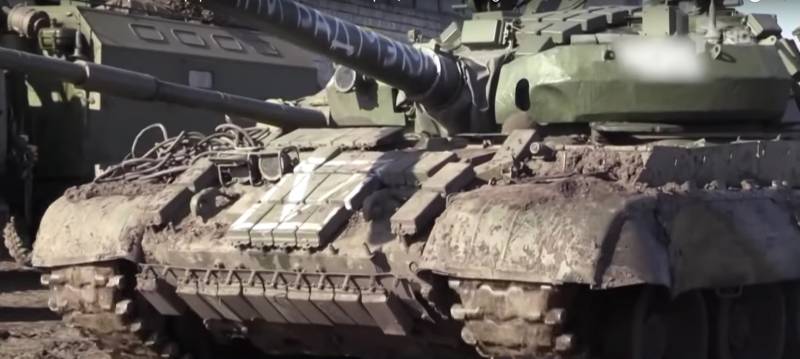
T-62M model 2022 with additional dynamic protection in the NVO zone
The T-62MV is subjected to similar executions: they cut off their “native” laser rangefinders, put a thermal imaging sight and weld anti-cumulative lattice screens in the aft. However, there are no changes in terms of basic protection: the Kontakt dynamic protection is where it should be - and this is actually a big plus, since HEAT weapons, along with mines and artillery, are the greatest threats to tanks in the NWO. Well, in terms of engines, the differences are the same as those of the T-62M.

T-62MV model 2022 on the territory of the 103rd BTRZ
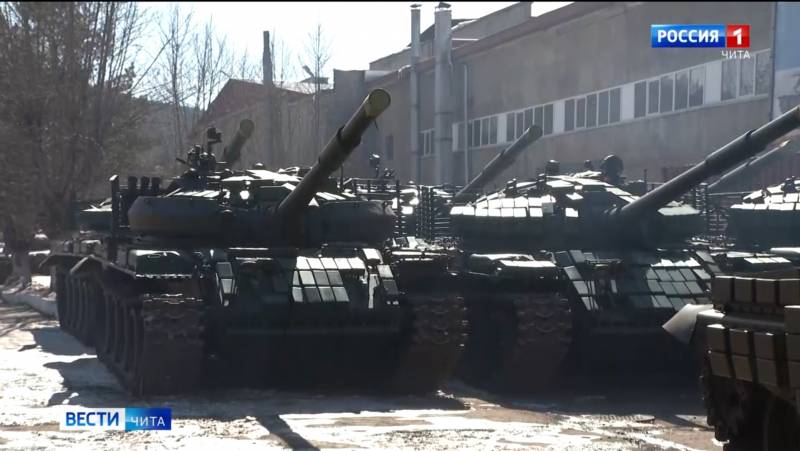
T-62M and T-62MV model 2022. Screenshot from the video of the TV channel "Russia-1"
Conclusions
There are many questions regarding the mass removal of T-62 tanks of various modifications from storage bases and their shipment to the zone of a special military operation. So much controversy around this. But we start from what is already there and what is inevitable.
These tanks began to be transferred to the front a long time ago and, judging by the fact that this was done in an accelerated mode, everything that could drive and fight was taken for mobilization: from the old T-62s of the sixties and seventies to more or less fresh T -62M. Came across, as we see, even museum samples.
After a while, the situation settled down - a project for the modernization of machines accepted for production appeared. However, even within the same release, tanks can vary greatly from each other, both in terms of engines and protection: the T-62M has metal-polymer blocks with DZ blocks on the roof of the turret and the forehead of the hull, while the T-62MV has a total body kit "Contact » without additional armor modules.
Of course, the production of combat vehicles is not a very flexible thing in terms of making changes on the go, but there is hope that someday, given the grandiose plans to modernize the T-62, tanks will still be more or less standardized in most characteristics despite their initial differences within the Soviet releases. This will have an extremely positive impact on their efficiency and on the labor costs of the already exhausted suppliers.
- Edward Perov
- dzen.ru / otvaga2004.mybb.ru / t.me/agurulev / t.me/Ugolok_Sitha
Information